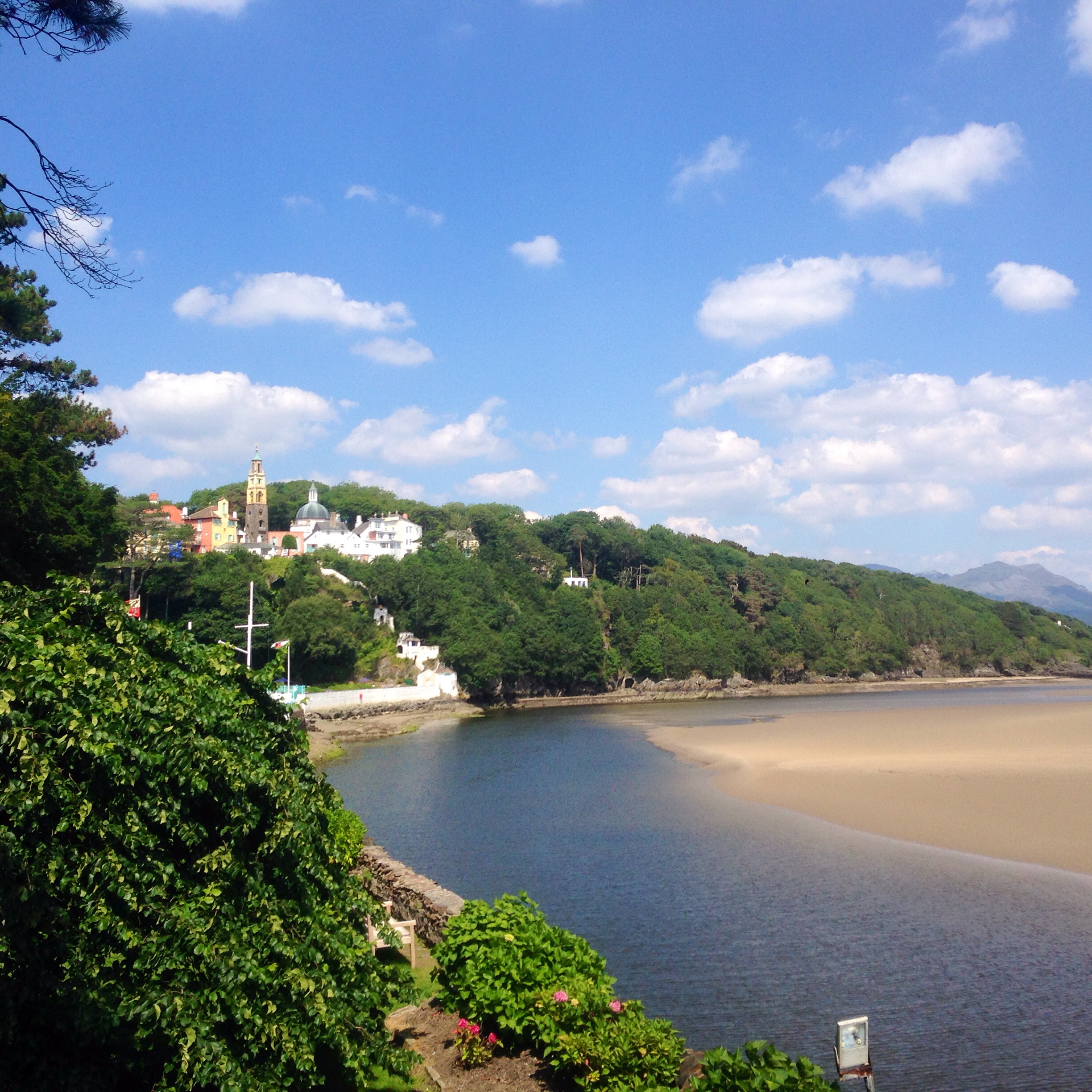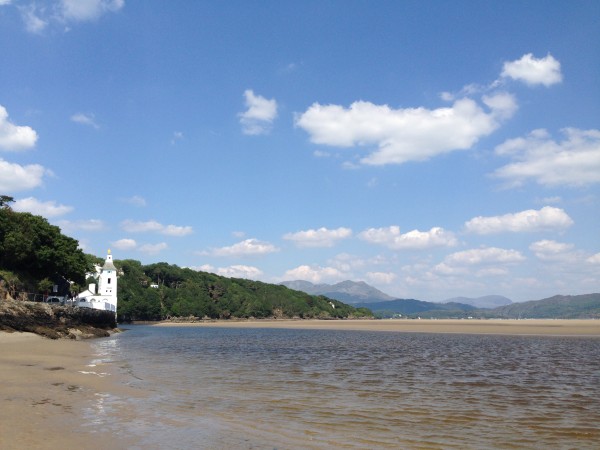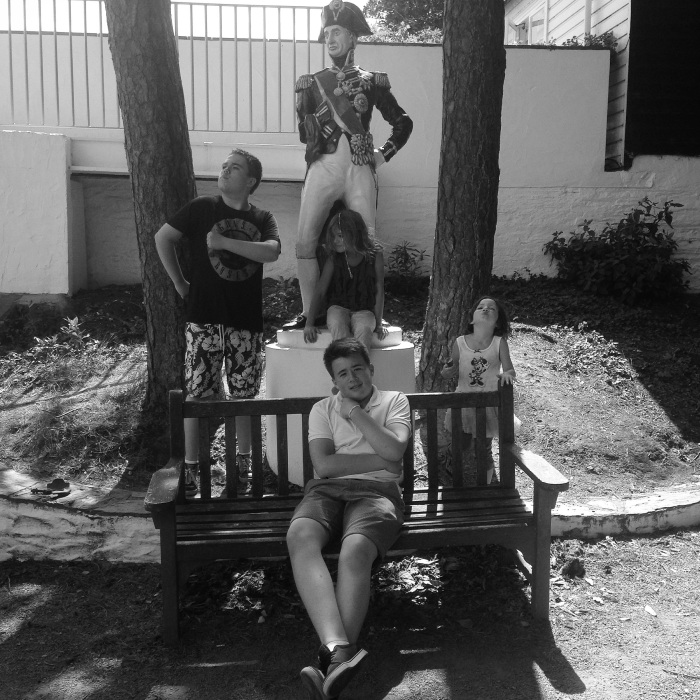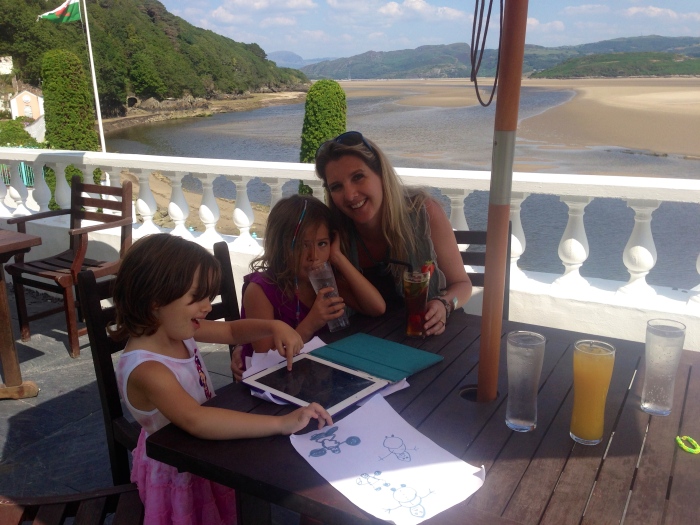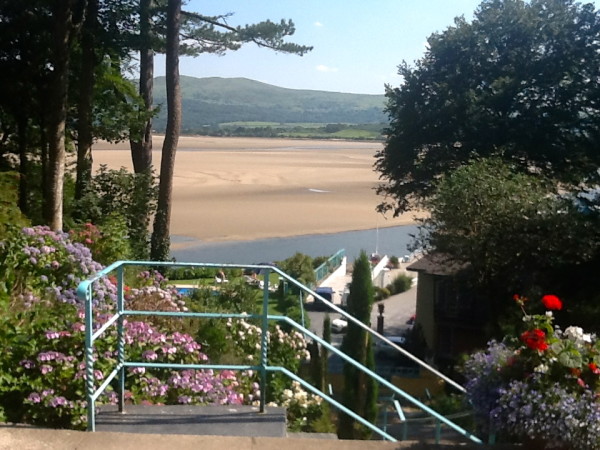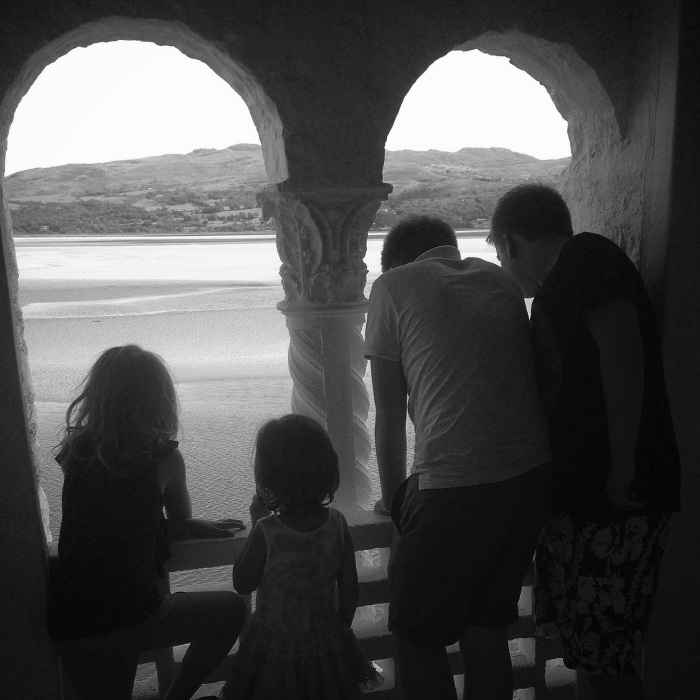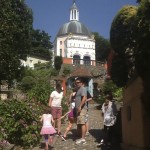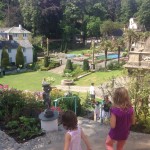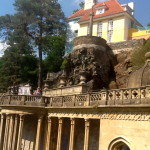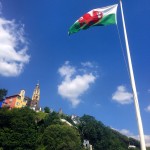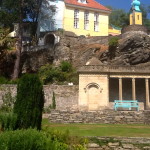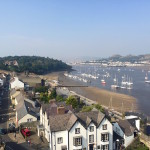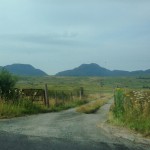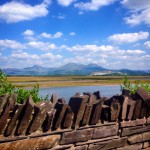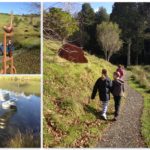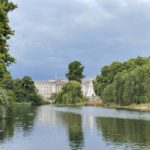In an exquisite natural location of breathtaking beauty sits the artfully designed village of Portmeirion in North Wales. During our week’s stay in North Wales this was one of the highlights. Travelling in a large family group, a blend of aunts, uncles, grandparents and cousins, can make finding a day-trip to suit everyone a challenge – but this worked out a treat.
The younger members of our group weren’t sure that they were going to enjoy it and one of our daughters was overcome with hay-fever on arrival (thankfully she was calmed by her rock of a Daddy, after finding a heavily air-conditioned cafe). We split into groups to explore and I headed off with two of my daughters and two nephews.
They quickly got into the character of the place and I had so much fun accompanying them. We meandered through the village and down to the coastline, admiring the scenery; that opened up before us, through the Italian styled architecture hugging the land.
Portmeirion is a place that opens up the mind to creativity and it’s easy to see why it was used as a film location for a Dr Who episode and ‘The Prisoner‘.
My group of explorers were inspired to pose for the camera without any suggestion or prompting from me!
It was easy to escape into other worlds and be completely in the moment. I would have loved to have stayed for a long weekend, in one of the many choices of accommodation in the village. Hotel Portmeirion is beautifully situated on the estuary front and was the original mansion of Aber Iâ. It was built around 1850 and first described by Richard Richards in 1861 as, “One of the most picturesque of all the summer residences to be found on the sea-coast of Wales”. Famous guests here include H.G. Wells, George Bernard Shaw, Bertrand Russell, Noël Coward and Sir Kenneth Clark.
I’ll have to wait for my children to be full grown and maybe revisit with my husband in our ‘silver hair’ years! I did manage to entice my group to sit and enjoy the view for a moment, so that I could at least ‘imagine’ a weekend of decadent relaxation. I ordered a Pimms for myself and a tray of club sandwiches for us all to eat. Most delightful, especially in the glorious sunshine.
We stepped down onto the sand and marvelled at the expanse of the tidal estuary of the River Dwyryd.
It was hard to leave such a beautiful, serene place, but before long we knew it was time to rejoin the rest of our family group.
We bid farewell to the natural scenery and walked back up hill into the architectural splendour of the village, set amongst lush forest land – reminiscent of New Zealand’s bushland.
We went on a little train ride around the forest land. With the heat it felt like being in a tropical rain forest! I would have loved to have enjoyed more time to walk through and explore the extensive grounds and gardens.
‘Before anyone took an interest in developing the Portmeirion Peninsula, the natural vegetation would have been sessile oak with birch, rowan and locally in wet areas alder and willows. The soil would have been a thin skeletal, acidic brown earth on Cambrian shales and grits which would have dried out very quickly as it does today.
The climate is very mild , winter frosts are rare and this has allowed plantings of tender exotic genera and species in common with many Cornish gardens.’ (Gardens of Portmeirion)
After the train ride we found the rest of our party and enjoyed a final walk around the main village before heading back to the caravan park.
On the scenic drive back to the Hafan Y Mor Caravan Park we marvelled at yet more beautiful scenery and passed by one of Wale’s many castles. Such a magical landscape.
